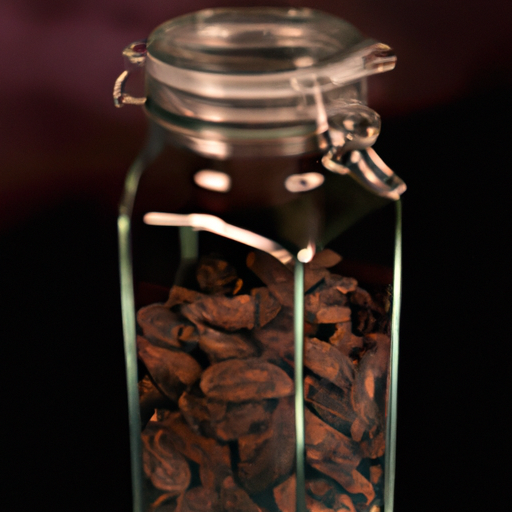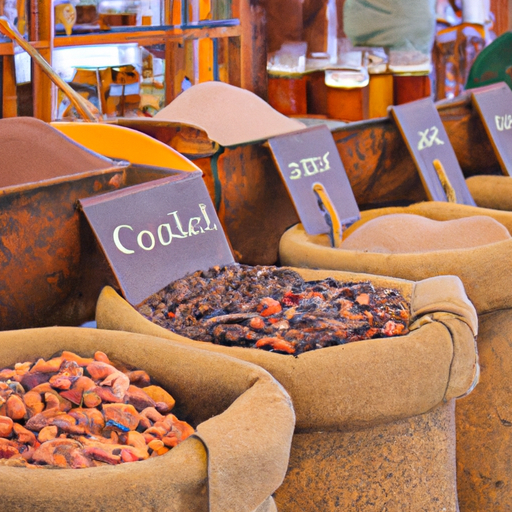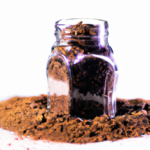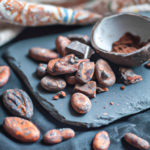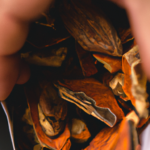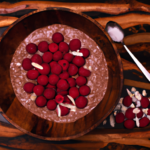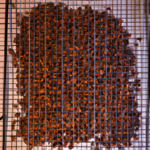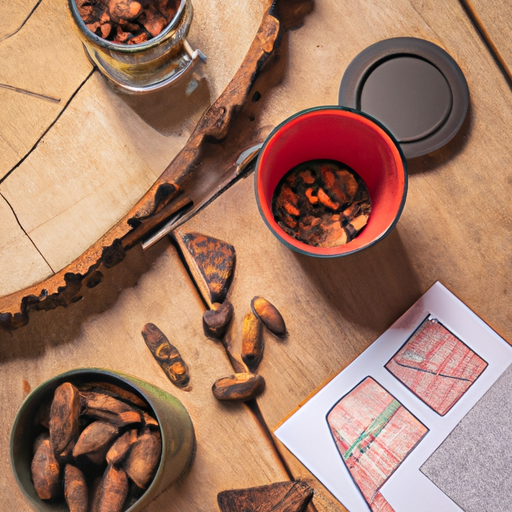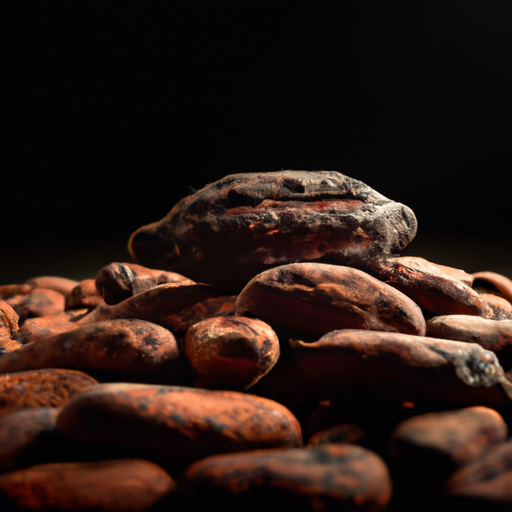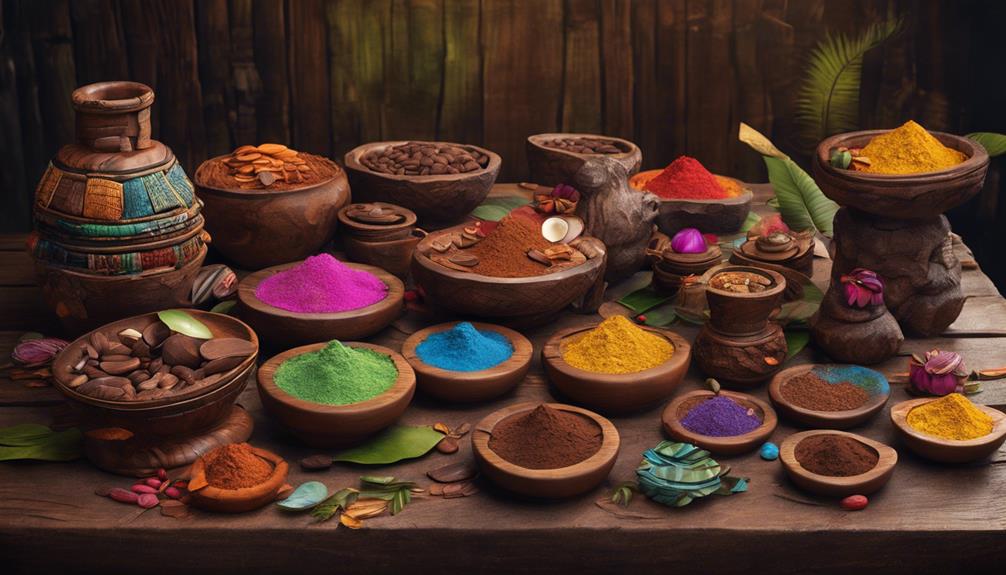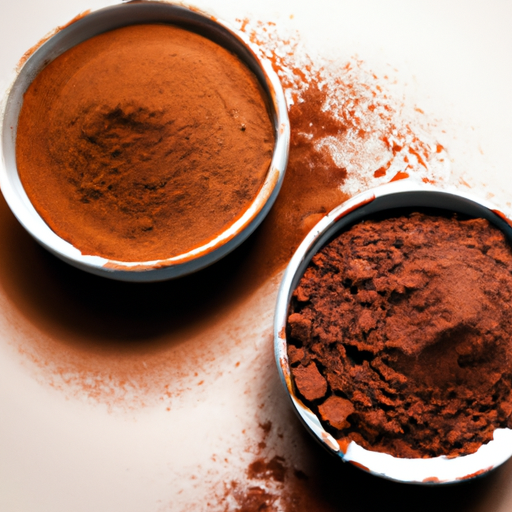Yes, raw cacao nibs can maintain their quality and freshness for an extended period if stored correctly. Experts suggest that by following a few simple guidelines, the shelf life of raw cacao nibs can be significantly prolonged.
In this article, I will share with you the best practices for storing cacao nibs, so you can enjoy their rich and intense flavor for as long as possible.
First and foremost, it is crucial to choose the right storage containers for your cacao nibs. Keeping them away from moisture and heat is also essential, as these elements can compromise the quality and taste of the nibs. Additionally, storing them in a cool, dark place and avoiding exposure to air are key factors in preserving their freshness.
But how do you know when your cacao nibs have gone bad? Don’t worry, I will provide you with tips on how to check for signs of spoilage. And if you happen to have expired nibs, I will even share some creative ways to still make use of them.
So, let’s dive in and learn how to properly store raw cacao nibs to maximize their shelf life and savor their deliciousness for longer!
Key Takeaways
- Raw cacao nibs should be stored in an airtight container in a cool, dry place, away from sunlight to maintain freshness and prevent rancidity.
- When stored correctly, raw cacao nibs can last up to 2 years, ensuring a longer shelf life.
- Raw cacao nibs are packed with antioxidants that help fight free radicals and reduce inflammation in the body.
- In addition to antioxidants, raw cacao nibs are rich in minerals like magnesium, iron, and zinc, providing added health benefits.
Proper Storage Containers
Don’t let your precious cacao nibs go stale! Store them properly in a container that’ll keep their flavor intact. When it comes to proper storage methods for cacao nibs, it’s essential to choose the right container.
Opt for an airtight container that will protect the nibs from exposure to air, which can cause them to oxidize and lose their flavor. Glass jars with tight-fitting lids or resealable bags are excellent options.
Additionally, it’s crucial to store cacao nibs at the recommended storage temperature. Aim for a cool and dark environment, ideally between 60 to 70 degrees Fahrenheit (15 to 21 degrees Celsius). This temperature range will help preserve the nibs’ freshness and prevent them from becoming rancid.
Now, let’s move on to the next section about keeping the nibs away from moisture and heat to ensure their longevity and quality.
Keep Away from Moisture and Heat
To maintain the quality of your delectable cacao nibs, it’s best to shield them from excessive moisture and heat. Here are a few reasons why this is crucial:
-
Moisture can cause the nibs to clump together and develop mold, ruining their texture and taste.
-
High temperatures can accelerate the oxidation process, causing the nibs to go rancid and lose their flavor.
-
Heat can also melt the cocoa butter in the nibs, leading to a greasy and unappetizing product.
-
Exposing the nibs to moisture and heat can also diminish their nutritional value, as heat-sensitive compounds may be destroyed.
To prevent these issues, store your cacao nibs in an airtight container in a cool, dark place. This will help maintain the storage temperature and prevent oxidation, ensuring that your nibs stay fresh and delicious for longer.
Store in a Cool, Dark Place
A key factor in preserving the quality of your delectable cacao nibs is finding a cool, dark spot to store them, ensuring their flavors remain intact. Proper storage temperature is crucial to maintaining the rich taste and aroma of the nibs. It is best to store them at a temperature between 60°F and 70°F (15°C and 21°C), as excessive heat can cause the nibs to lose their flavor and become rancid. Additionally, exposure to light can lead to oxidation and degradation of the nibs’ quality. To protect them from light, store the nibs in an opaque container or package. This will help maintain their freshness and prevent any unwanted changes in taste. By following these best practices, you can enjoy the full spectrum of flavors that cacao nibs have to offer. Now, let’s explore another important step in preserving their quality: avoiding exposure to air.
Avoid Exposure to Air
Make sure you tightly seal the container to prevent any air from getting in and affecting the quality of your delectable nibs. Preventing oxidation is crucial in maintaining the freshness and flavor of raw cacao nibs. Here are three reasons why you should avoid exposure to air:
-
Retains Nutritional Value: Oxygen in the air can lead to the breakdown of essential nutrients, such as antioxidants and flavonoids, present in cacao nibs. By keeping them airtight, you can preserve these beneficial compounds.
-
Extends Shelf Life: Oxygen also accelerates the degradation process, causing your cacao nibs to go stale quicker. By preventing air exposure, you can extend their shelf life and enjoy them for a longer period.
-
Benefits of Vacuum Sealing: Using a vacuum sealer is an effective way to remove air from the container. This method not only prevents oxidation but also helps in maintaining the nibs’ texture and aroma.
By tightly sealing your container, you can ensure the longevity and quality of your raw cacao nibs.
Now, let’s move on to the next section and learn how to check for signs of spoilage.
Check for Signs of Spoilage
Keep an eye out for any telltale signs that your precious cacao nibs have gone bad, as they may have taken a turn for the worse and lost their delectable charm. To ensure the freshness and quality of your raw cacao nibs, it is important to check the expiration date on the package. This will give you an idea of how long the nibs can be safely consumed. Additionally, there are some common signs of spoilage that you can look out for. These include a rancid or off smell, mold growth, or a change in texture or appearance. If you notice any of these signs, it is best to discard the nibs as they may no longer be safe to consume. Now that we have covered checking for spoilage, let’s move on to discussing the shelf life of raw cacao nibs.
Shelf Life of Raw Cacao Nibs
To ensure your raw cacao nibs stay fresh and delicious, it’s important to know how long they will last before you might need to replace them.
The shelf life of raw cacao nibs can vary depending on several factors, including the storage temperature and packaging options.
Generally, if stored properly in a cool and dry place, raw cacao nibs can last for up to two years. However, it’s important to note that their quality may start to decline after a year.
It’s also crucial to choose the right packaging option to maintain their freshness. Opt for airtight containers or resealable bags to protect the nibs from moisture and air exposure.
By following these guidelines, you can extend the shelf life of your raw cacao nibs and continue enjoying their rich flavor and health benefits.
Tips for Extending Shelf Life
To extend the shelf life of raw cacao nibs:
- Store them in an airtight container or resealable bag.
- Keep them away from moisture, heat, and direct sunlight.
- Store them in a cool and dark place, like a pantry or refrigerator.
- Avoid exposing them to strong odors, as they can absorb unwanted flavors.
Following these tips will help preserve the freshness of your cacao nibs and allow you to enjoy their rich flavor for a longer period. Now, let’s move on to creative ways to use expired nibs.
Creative Ways to Use Expired Nibs
If you’ve got a stash of expired cacao nibs gathering dust, it’s time to get creative and add a burst of chocolatey goodness to your recipes. Don’t let those nibs go to waste! Here are some creative ways to repurpose expired cacao nibs:
-
Incorporate them into baked goods: Add a crunchy texture and rich chocolate flavor to cookies, brownies, or muffins by mixing in crushed cacao nibs.
-
Make chocolate granola: Toast oats, nuts, and seeds, then mix in melted chocolate and sprinkle with crushed cacao nibs for a delightful breakfast or snack.
-
Brew a cacao nib tea: Steep cacao nibs in hot water for a few minutes, strain, and enjoy a warm and comforting chocolate-infused beverage.
By repurposing your expired cacao nibs, you can still enjoy their unique flavor and add a touch of chocolate to your recipes.
Now, let’s move on to some final thoughts on storing raw cacao nibs.
Final Thoughts on Storing Raw Cacao Nibs
When it comes to preserving the delicate essence of these delectable chocolate nuggets, proper storage is key. Raw cacao nibs should be stored in an airtight container in a cool, dry place, away from direct sunlight. This will help maintain their freshness and prevent them from turning rancid. However, it is important to note that raw cacao nibs have a relatively long shelf life of up to two years if stored properly.
In addition to their long shelf life, raw cacao nibs also offer a variety of health benefits. They are packed with antioxidants, which help fight against free radicals and reduce inflammation in the body. Cacao nibs are also a good source of minerals like magnesium, iron, and zinc.
If you’re looking for creative ways to use expired cacao nibs, here are some ideas for cacao nib recipes: sprinkle them on top of smoothie bowls, mix them into homemade granola, blend them into a nut butter for a chocolatey twist, or incorporate them into baked goods like cookies or brownies. These recipes not only make use of expired nibs but also provide a delicious and nutritious treat.
To summarize, proper storage is crucial for preserving the freshness of raw cacao nibs. With a long shelf life of up to two years, they offer a range of health benefits and can be used in various recipes to add a delightful chocolatey flavor.
Frequently Asked Questions
Can I store raw cacao nibs in the refrigerator or freezer to extend their shelf life?
Yes, you can store raw cacao nibs in the refrigerator or freezer to extend their shelf life. However, it’s important to note that storing cacao nibs at room temperature in an airtight container is the recommended method for proper storage.
How can I tell if my raw cacao nibs have gone bad?
To check the freshness of raw cacao nibs, look for signs like a rancid smell or change in texture. If stored properly in an airtight container in a cool, dark place, they can last up to a year.
Are there any health risks associated with consuming expired cacao nibs?
There are potential health risks associated with consuming expired cacao nibs. Expired nibs may lose their health benefits and can potentially harbor harmful bacteria or molds. It’s important to check expiration dates and consume them within the recommended timeframe.
Can I store raw cacao nibs in the original packaging they came in?
Yes, you can store raw cacao nibs in their original packaging. However, alternative storage methods like transferring them to an airtight container can help extend their freshness and prevent moisture or odors from affecting their quality.
Can I store raw cacao nibs in a clear glass jar, or does it need to be opaque?
Storing raw cacao nibs in a clear glass jar is fine, as long as it’s kept in a cool, dark place. However, opaque storage containers are recommended to protect the nibs from light exposure, which can cause them to deteriorate faster.
Do the storage guidelines for raw cacao butter also apply to raw cacao nibs?
Yes, the storage guidelines for raw cacao butter also apply to raw cacao nibs. To maintain the quality and freshness, it is important to store both products in a cool, dry place away from direct sunlight. Proper storage will help extend the raw organic cacao butter shelf life and preserve the nibs’ flavor.
Conclusion
In conclusion, properly storing raw cacao nibs is essential for maintaining their quality and flavor. By using airtight containers, keeping them away from moisture and heat, and storing them in a cool, dark place, you can extend their shelf life and prevent spoilage.
Interestingly, did you know that raw cacao nibs can last up to two years if stored correctly? This statistic highlights the importance of following proper storage practices to make the most of your cacao nibs and enjoy their rich taste for a long time.

